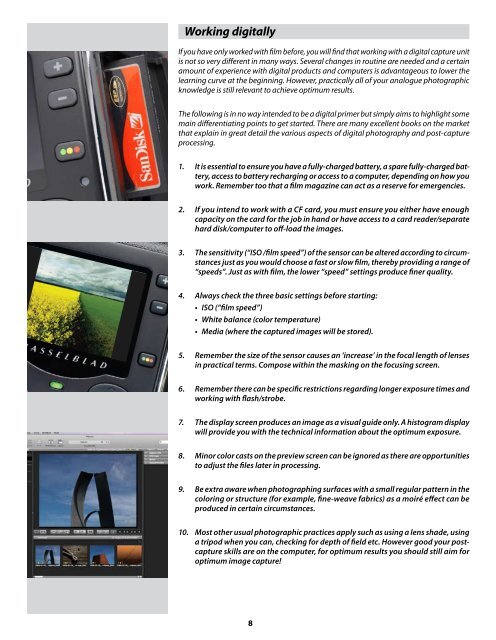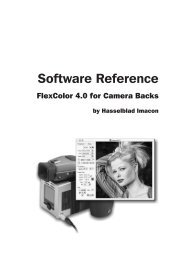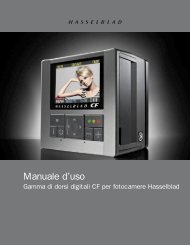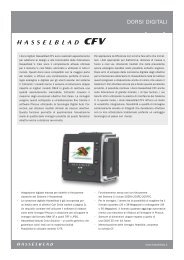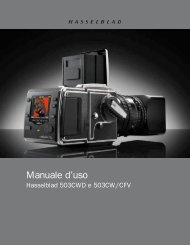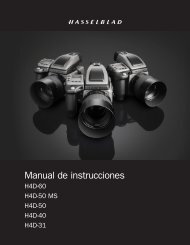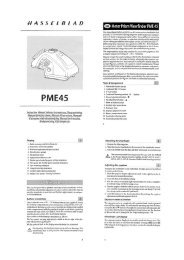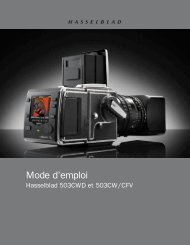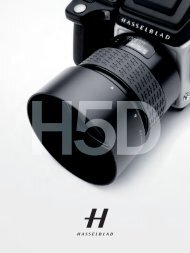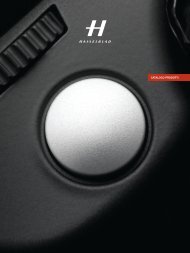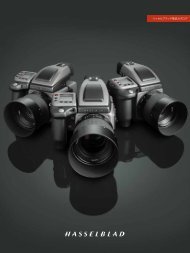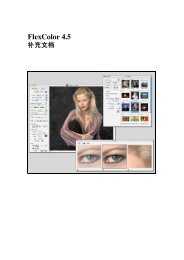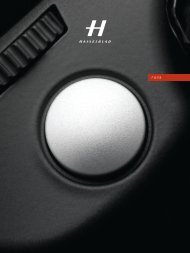User Manual - Hasselblad.jp
User Manual - Hasselblad.jp
User Manual - Hasselblad.jp
Create successful ePaper yourself
Turn your PDF publications into a flip-book with our unique Google optimized e-Paper software.
Working digitally<br />
If you have only worked with film before, you will find that working with a digital capture unit<br />
is not so very different in many ways. Several changes in routine are needed and a certain<br />
amount of experience with digital products and computers is advantageous to lower the<br />
learning curve at the beginning. However, practically all of your analogue photographic<br />
knowledge is still relevant to achieve optimum results.<br />
The following is in no way intended to be a digital primer but simply aims to highlight some<br />
main differentiating points to get started. There are many excellent books on the market<br />
that explain in great detail the various aspects of digital photography and post-capture<br />
processing.<br />
1. It is essential to ensure you have a fully-charged battery, a spare fully-charged battery,<br />
access to battery recharging or access to a computer, depending on how you<br />
work. Remember too that a film magazine can act as a reserve for emergencies.<br />
2. If you intend to work with a CF card, you must ensure you either have enough<br />
capacity on the card for the job in hand or have access to a card reader/separate<br />
hard disk/computer to off-load the images.<br />
3. The sensitivity (“ISO /film speed”) of the sensor can be altered according to circumstances<br />
just as you would choose a fast or slow film, thereby providing a range of<br />
“speeds”. Just as with film, the lower “speed” settings produce finer quality.<br />
4. Always check the three basic settings before starting:<br />
• ISO (“film speed”)<br />
• White balance (color temperature)<br />
• Media (where the captured images will be stored).<br />
5. Remember the size of the sensor causes an ‘increase’ in the focal length of lenses<br />
in practical terms. Compose within the masking on the focusing screen.<br />
6. Remember there can be specific restrictions regarding longer exposure times and<br />
working with flash/strobe.<br />
7. The display screen produces an image as a visual guide only. A histogram display<br />
will provide you with the technical information about the optimum exposure.<br />
8. Minor color casts on the preview screen can be ignored as there are opportunities<br />
to adjust the files later in processing.<br />
9. Be extra aware when photographing surfaces with a small regular pattern in the<br />
coloring or structure (for example, fine-weave fabrics) as a moiré effect can be<br />
produced in certain circumstances.<br />
10. Most other usual photographic practices apply such as using a lens shade, using<br />
a tripod when you can, checking for depth of field etc. However good your postcapture<br />
skills are on the computer, for optimum results you should still aim for<br />
optimum image capture!<br />
8


